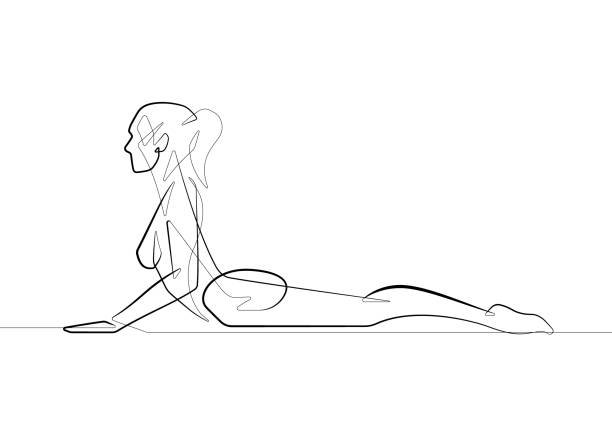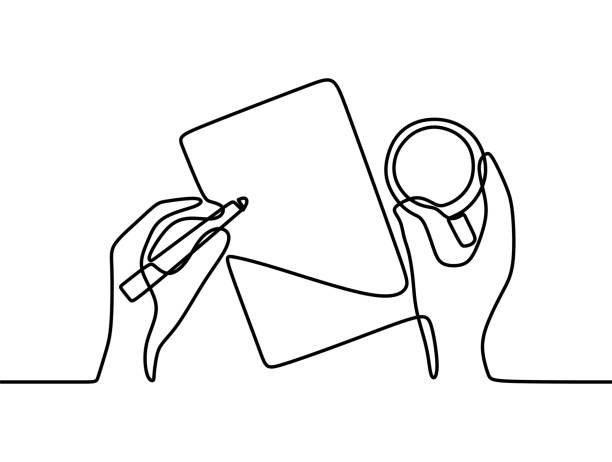How to Heal a Dysregulated Nervous System
Nervous system dysregulation robs you of your self-agency and your ability to choose. How to heal a dysregulated nervous system involves reestablishing ownership of your body and mind.
Being regulated means feeling confident and validated in how you feel and feeling your feelings without being overwhelmed, angry, ashamed, or shut down.
How to regulate a dysregulated nervous system includes:
Learning how to self-soothe and maintain focus
Remaining calm when sensations, images, thoughts or sounds remind you of the past
Discovering ways to be engaged with others and in the present moment
Accepting the ways you coped in the past to survive and not needing to hide them anymore
There are two main ways to learn how to regulate - either top down or bottom up.
Top - down regulation is focused on strengthening your ability to witness your emotions, thoughts, and physical sensations.
Bottom -up regulation means retraining our nervous system through breath, movement and touch.
Below are a variety of techniques, both bottom-up and top-down, that include the key components needed for a regulated nervous system so you ultimately have more control, choice, and freedom of how you respond and move through the world.
Body & Emotional Awareness
One of the most important parts of how to heal a dysregulated nervous system is self-awareness.
Folks that have dealt with chronic stress or trauma often suffer with overwhelming emotions and unbearable sensations like knots in the stomach or tightness in the chest. The fear of being taken over by sensations keeps the body stuck and the mind closed.
Despite what happened being in the past, the emotional brain continues to make us feel scared and helpless. The irony is that by suppressing the feeling of these sensations, we increase the chance of them being unbearable.
The power of body awareness is that it connects us with what we care about and long for.
Our sensations are the building blocks of our emotions, thoughts, feelings and perceptions about the world.
By taking the time to notice when we are annoyed, angry or anxious, it allows us to shift our perspective and offers new ways of being besides our habitual reactions.
Body Awareness Practice #1: Getting to Know Our Inner Landscape
In order to begin to get to know our inner landscape, the first step is to focus on our internal sensations and how they move and change when we shift our thinking, body position or breathing.
Begin by anchoring yourself in the here and now by scanning your environment for signs of safety or things that are pleasing to you. This can be a vibrant color, pattern, the quality of the light, a sound, a smell, something tactile like petting your dog, the feeling of your feet on the floor, or gravity pulling you down in your seat.
Notice the sensations and emotions in your body and allow them to be there without judgement or needing them to leave or move.
Stay with your body as it processes these feelings, shifting back into the outer world and again finding something that feels safe if you get overwhelmed.
Body Awareness Practice #2: Stop, Drop, and Roll
This practice can be used when you are in a situation that is moving towards a crisis. It is adapted from a practice from Resmaa Menakem.
When you notice things beginning to escalate or you are triggered, STOP and come back to your body.
DROP into your internal experiences - tingling, heat/coolness/, tension or openness, changes in your breathing. Notice what’s happening around you, where the situation you are in may be headed and what you may be doing that is causing the movement.
Ask yourself: Is this the outcome I want to move towards? If not, say out loud “Let’s not go this direction. Let’s find a different way.”
Then allow yourself to ROLL with what happens next in your body and mind. You may want to cry, scream, dance, or punch something - everything is welcomed, simply allow it to unfold how it wants to, even if it feels silly or crazy.
This process of being mindful of our inner experiences moves us into the rest and digest mode of the parasympathetic nervous system. This creates a sense of safety and being in the here and now, which are two crucial components to any deep healing work. It is vital to observe and tolerate both emotional and physical sensations in the now before moving into looking at the past.
Somatic Trauma Therapy
Have you ever found yourself over- or under-reacting to a situation for no obvious reason?
This is often due to the unresolved energy from the past that is locked in your nervous system.
When stress in our lives exceeds our ability to cope (ie during a highly emotionally overwhelming event) we survive by storing it in our bodies in the forms of flight, fight, and freeze so we can process it later when it is safe to do so.
When we are stuck in a survival state for a longer period of time, we continually sense danger when danger is not present, or completely shut down and lose our capacity to live in the present.
In order to heal from stress stored in the body, we must return our bodies to a state of equilibrium.
Somatic trauma therapy is important because it allows for you to physically move through what’s keeping you stuck with a sense of safety, allowing for the relationship to past trauma to change. This leads to the stuck energy discharging and ultimately creating clarity, confidence, and the ability to be in the present moment.
This often is missed in traditional talk therapy because retelling the story of what happened doesn’t allow our mind and body to create a new and more empowered relationship with the past experience.
Somatics offers a holistic way to transform with the end goal of how we behave and think is aligned with our visions and values—even under pressure or under the same old conditions.
By adding the body into the healing process, we can move beyond only the mental understanding of what happened to us and begin to reprogram the body’s survival instincts, allowing for a greater sense of connection, safety, and ease in the body and life as a whole.
Learn More About Somatic Trauma Therapy
Body Work
One of the most natural ways we can calm ourselves down after a threat has passed is to be touched, hugged or rocked.
This allows for leftover energy from the sympathetic nervous system activation of fight/flight/freeze to be discharge while also making us feel like we are safe, protected, and have agency.
Receiving mindful touch and movement makes us feel grounded and allows us to find old sources of tension that we may not have been aware of. The body becomes restricted when we hold onto old emotions. We use a lot of energy to hold back tears or any movements or sounds that may reveal what is truly happening inside. Once the physical tension is released, emotions can be release and the body is able to be freer and in flow.
Before beginning any trauma recovery, it is vital to feel safe in your own skin. Trying some sort of bodywork, whether it is massage, Feldenkrais, myofascial release, or craniosacral therapy can help begin that process.
Body Work Practice #1: Slow Rocking
Find a comfortable seat and begin by grounding yourself with a few deep breaths. Start by slowly experimenting with rocking your torso forward/back and side to side. You can try sitting versus standing and with different speeds, but always keeping it slow.
Move towards what feels appealing in the moment. Once you feel complete, take a moment to notice how your body feels now versus when you started. Other option: Only move you head and neck from side to side slowly while keeping your body still.
Body Work Practice #2 Rubbing Your Belly
Find a comfortable seat and begin by grounding yourself with a few deep breaths. Put your palm on the center of your belly, slightly above your belly button. Gently press your hand and hold there for a few seconds.
Then begin to slowly rub your stomach in whatever motion feels good for three to four minutes. Take a moment when you are finished to notice how you feel internally. An alternative is to rub the center of your breastbone or the space in between your breastbone and your navel.
Body Work Practice #3 Joint Energy Release
Find a comfortable seat and slowly rotate your ankle twenty times in both directions. You can try moving in one direction for a bit, pausing for 10 seconds, and then moving in the other direction.
Repeat with both ankles, stopping for 10 seconds in between sets. You might want to try to do the same for both your knees, hips, wrists, elbows and shoulders. These rotations help release any traumatic energy that may have stored in your joints.
Yoga
Yoga brings your focus on your breathing and your internal sensations in the current moment. This allows you to notice the connection between your emotions and your body which can lead to experimenting with changing the way you feel.
For example, if I breathe deeply, will that release the tension in my hips? Simply noticing what you are feeling begins to make us more emotionally regulated.
Yin Yoga
Yin yoga focuses on actively seeking sensation but not excruciating pain. The poses are done passively to allow the muscles to relax and open up the connective tissue.
This is where we often store emotions and trauma in the body so by focusing there, it not only initiates a release of tension, but also ignites our parasympathetic nervous system moving us into a calm, restful state.
Immobilization is often the base of most traumas - we wanted to fight or flee but couldn’t escape. Yin allows for a new experience of being immobilized without fear and keep our social engagement system online. This allows us to experience a new way of being in our bodies of safety that can lead to us being able to release the original trauma.
Music / Sound / Voice
One of the best ways to regulate our nervous system is using music and vibration.
How does this work?
Our vagus nerve is the longest cranial nerve in our body. It regulates the rest and digest part of our nervous system (parasympathetic nervous system).
When we hear music, sound vibrations reverberate through the eardrum before moving to the vagus nerve.
Once the vagus nerve activates, it stimulates the rest / digest side of our nervous system (parasympathetic nervous system), which sends a signal of relaxation to our body and mind.
Recent studies show that listening to calming music with a slow beat causes a decrease in heart rate, breathing, and blood pressure.
Along with listening to music, humming or saying “om” activates the vagus nerve because it is connected to our voice box (the larynx). Humming also requires you to control your breathing, another direct link to the vagus nerve.
Sound Practice #1 Humming
Place your attention on the space behind the center of your belly button. Take a few deep slow breathes, noticing the belly pulling the air into it. When you reach the fourth or fifth exhale, start to hum a low, even tone. You may want to try to make a deep “voo” sound and see how that resonates in your belly.
Take a natural inhale and repeat this process a few times, experimenting with your pitch on each exhale. After doing this for two to three minutes, stop to notice what is happening inside of your body. What’s changed since you began this practice? What sensations, thoughts, memories or images are coming up? Is there a movement your body wants?
Notice what is happening and allow yourself to try it out. Another variation is to pick a song with a simple melody that is comforting to you and hum from beginning to end with your belly. Once the song is done, notice what is happening inside of your body.
Sound Practice #2 Buzzing
Make yourself comfortable and begin with breathing deeply. Place your attention behind your navel while relaxing your shoulders. Place your tongue behind the top row of your teeth, relax your jaw, and allow your mouth to hang open. Take a slow exhale and start to buzz like bee.
Try to extend the buzz with the exhale as long as you can without straining. Continue this practice for two to three minutes and pause to notice what is happening inside of your body. Play with different vibrations, volumes and tones until you find ones that feel the best.
Safe Enough Relationships
Countless studies show that the most powerful protection against trauma is having a supportive community or network of people.
When we become terrified as a kid or adult, our nervous systems are soothed by a hug and reassuring voice of someone we feel safe with.
These positive cues of safety activate parts of our brain that cues the parasympathetic nervous to turn on, leading to feeling calm and comfortable.
Safe relationships give us the courage to face and process what happened to us. Most of our wiring in our brain circuits is solely for being attuned to others. Therefore regulating our nervous system means reconnecting with other people.
Therapeutic Relationship
Most people need safe enough relationships and guidance from a professional to heal the trauma from a dyregulated nervous system. You need someone you trust to guide you, safely hold your feelings, and someone who can see your wholeness while exploring the fragments of your past that you’ve had to keep guarded for so long.
It’s important the person you choose is trained in trauma-informed modalities and has learned a variety of techniques to stabilize/soothe patients, integrating traumatic memories, and reconnect patients to themselves and the world around them.
Questions to Ask When Looking For a Therapist:
What modalities / techniques of therapy/healing or body work are they trained in and where were they trained?
Have they tried the modalities they are giving to others and benefited from it?
Do you feel comfortable and connected with them? Do they seem comfortable and connected with themselves as well as you?
Does it seem like they are curious in learning about who you are and what you need in a genuine way? Do they take the time to find our why you think and do the things you do?
Do they seem open to learning from you?
There is no one treatment or modality that works for everyone. Any therapist who believe their method is the only answer to what you are struggling with is a red flag.
Here is directory of body-based trauma therapist/practitioners.
Writing
Writing is one of the most effective ways to begin to access your internal world.
Studies show that folks that feel their emotions through writing about them show significant changes over time including a decline of blood pressure, heart rate, and drop in sympathetic activation.
Writing Practice: Inner World Check In
In our daily lives, we often dismiss our own emotions and experiences without realizing it. This can cause our nervous systems to be activated and stuck in the past if what we needed at the time didn’t happen in the way we needed it to. Taking the time to check with ourselves allows us to make sure we are honoring our internal needs and feelings.
Prompts for Checking In:
Something I am judging/blaming/shaming myself over is:
I want to forgive myself so that I can feel:
When I made those choices in the past, I was coming from a place of (fill in the emotional experience you were having – fear, anxiety, insecurity) ___________.
I now know that I was doing the best I could with the tools I had, and I see that I was in desperate need of (Fill in what you needed - reassurance, love, a hug, acknowledgement) ___________.
I am going to help nurture that part of myself by (Fill in how you are going to meet that need - slowing down to listen, stopping/starting doing something, validating yourself) _______.
These practices are a start to how to heal a dysreguated nervous system but there are many more including communal practices, dance/movement, being in nature, and more. If you have a favorite practice that, leave a comment below, send me a message or tag me @soloandkicking so we can together start to regulate our collective nervous system.
If you want to learn more about your nervous system, check out my previous post What is a Dysregulated Nervous System.
__________________________
References:
Gessel, N. (2019, January 8). Yin, Restorative, Vinyasa: What’s The Best For Trauma Survivors? Sivana East. https://blog.sivanaspirit.com/yg-yin-restorative-vinyasa-oh-my-whats-the-best-for-trauma-survivors/
Kolk MD, Bessel van der. The Body Keeps the Score. Penguin Publishing Group
Menakem, R. (2017). My grandmother’s hands. Central Recovery Press.
Helm, A. S. H., & Ramezani, M. (2021). The effect of music and vagus nerve to improve various Diseases. Pakistan Journal of Medical and Health Sciences, 15(6), 1854–1857. https://doi.org/10.53350/pjmhs211561854
Johnson, N. (2022, February 24). Vera - Music and the Vagus Nerve. VeraTM. https://www.veramusic.com/blog/music-and-the-vagus-nerve







